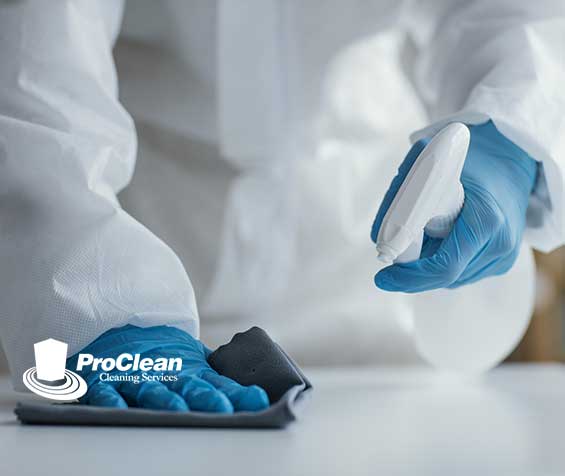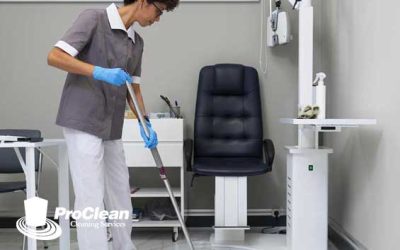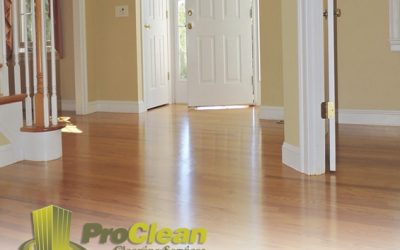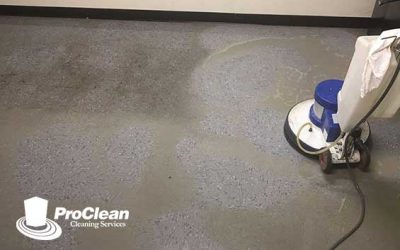Keeping our environment clean and healthy has always been a top priority, especially in the wake of the recent global health crisis. But how exactly do we achieve that? This is where sanitizing and disinfecting come into play. While these terms are often used interchangeably, it’s essential to understand the key differences between them to make informed decisions about cleaning practices.
Sanitizing and disinfecting both involve killing germs and reducing the risk of infections, but they target different types of microorganisms. Sanitizing focuses on reducing the number of bacteria on surfaces to a safe level, while disinfecting goes a step further by eliminating a broader range of germs, including viruses and fungi.
In this article, we will delve into the nuances of sanitizing and disinfecting. We will explore their definitions, discuss the different methods and products used, and highlight the situations where each is most effective. By the end, you will have a clear understanding of these crucial terms and be equipped to create a truly clean and healthy environment.
Discover the key differences between sanitizing and disinfecting, and learn how to keep your surroundings safe and germ-free. Let’s get started!
Importance of maintaining a clean and healthy environment
Before we dive into the differences between sanitizing and disinfecting, let’s first understand why maintaining a clean and healthy environment is crucial. A clean environment not only promotes physical well-being but also contributes to mental and emotional well-being. When we are surrounded by cleanliness, we feel more comfortable, productive, and at ease.
A clean environment is especially important in high-traffic areas such as schools, hospitals, and offices, where germs and bacteria can easily spread. Proper cleaning practices help prevent the transmission of diseases and create a safe space for everyone. Additionally, a clean environment reduces the risk of allergies and respiratory problems, making it essential for individuals with sensitive health conditions.
What is sanitizing
Sanitizing is the process of reducing the number of bacteria on surfaces to a safe level. It primarily focuses on eliminating harmful bacteria that can cause illness. Sanitizing is effective in most everyday situations and is typically used on food contact surfaces, such as cutting boards, utensils, and countertops, to ensure they are safe for use.
There are various methods for sanitizing surfaces, including heat, chemicals, and UV light. Heat sanitization involves using hot water or steam to kill bacteria, while chemical sanitization utilizes sanitizing agents like chlorine, iodine, or quaternary ammonium compounds. UV light sanitization, on the other hand, uses ultraviolet rays to eliminate bacteria and other microorganisms.
It’s important to note that sanitizing does not kill all types of germs, including viruses and fungi. Therefore, in situations where a more extensive germ-killing action is required, disinfecting should be the preferred method.
What is disinfecting
Disinfecting goes a step further than sanitizing by eliminating a broader range of germs, including viruses and fungi. It aims to kill or inactivate these microorganisms, reducing the risk of infections. Disinfecting is typically used in areas with a higher risk of infection or where there has been exposure to harmful pathogens.
Disinfectants are chemical substances specifically designed to kill germs. They come in various forms, such as sprays, wipes, and solutions. Common disinfectants include bleach, hydrogen peroxide, and alcohol-based solutions. It’s essential to follow the instructions provided by the manufacturer, including the required contact time, to ensure effective disinfection.
While disinfecting is necessary in certain situations, it’s important to remember that not all surfaces require disinfection on a regular basis. Overusing disinfectants can lead to the development of antibiotic-resistant bacteria and harm the environment. Therefore, it’s crucial to understand when to use sanitizing and when to use disinfecting to strike the right balance between cleanliness and sustainability.
Key differences between sanitizing and disinfecting
Now that we have a basic understanding of sanitizing and disinfecting, let’s explore the key differences between these two processes:
- Targeted microorganisms: Sanitizing primarily focuses on reducing bacteria to a safe level, while disinfecting aims to eliminate a broader range of germs, including viruses and fungi.
- Contact time: Sanitizing typically requires less contact time compared to disinfecting. Sanitizing agents usually need to be in contact with the surface for a shorter duration, while disinfectants often require a longer contact time to effectively kill or inactivate germs.
- Effectiveness: Disinfecting is generally more effective in killing germs compared to sanitizing. While sanitizing reduces the number of bacteria, disinfecting provides a higher level of germ-killing action, making it more suitable for high-risk areas or situations where there has been exposure to harmful pathogens.
- Regulatory requirements: In some industries, such as food service establishments, sanitizing may be a regulatory requirement to ensure food safety. Disinfecting, on the other hand, may be recommended or required in healthcare facilities or during disease outbreaks.
Understanding these differences allows us to choose the appropriate cleaning method based on the specific needs of our environment.
When to use sanitizing and when to use disinfecting
Knowing when to use sanitizing and when to use disinfecting is essential to maintain a clean and healthy environment. Here are some general guidelines to help you determine which method to use:
- Sanitizing: Sanitizing is sufficient for most everyday situations where there is a low risk of infection or exposure to harmful pathogens. Use sanitizing methods and products on food contact surfaces, such as kitchen countertops, cutting boards, and utensils. Sanitizing is also suitable for surfaces that come into frequent contact with hands, like doorknobs or light switches.
- Disinfecting: Disinfecting is necessary in higher-risk areas or situations where there has been exposure to harmful pathogens. Use disinfectants on surfaces in healthcare facilities, public restrooms, and areas frequented by large crowds. During disease outbreaks or when dealing with known infections, disinfection should be prioritized to prevent the spread of germs.
It’s important to note that while disinfecting provides a higher level of germ-killing action, it does not replace the need for regular cleaning. Proper cleaning practices, such as removing dirt and debris from surfaces, should always precede sanitizing or disinfecting.
Common misconceptions about sanitizing and disinfecting
There are several common misconceptions surrounding sanitizing and disinfecting that need to be addressed. It’s important to dispel these myths to ensure that we are using these cleaning methods effectively:
- Myth: Sanitizing and disinfecting are the same: As we have discussed earlier, sanitizing and disinfecting target different types of microorganisms and have varying levels of germ-killing action. Understanding these differences is crucial for effective cleaning.
- Myth: More disinfectant is better: Using excessive amounts of disinfectant does not necessarily lead to better results. It’s important to follow the instructions provided by the manufacturer, including the recommended concentration and contact time, to ensure effective disinfection.
- Myth: Natural cleaning products are as effective as chemical ones: While natural cleaning products may have some antimicrobial properties, they are generally not as effective as chemical disinfectants. When it comes to killing germs, it’s important to use EPA-approved disinfectants that have been proven to be effective.
By addressing these misconceptions, we can make informed decisions about our cleaning practices and ensure optimal cleanliness and hygiene.
How to properly sanitize and disinfect different surfaces
Properly sanitizing and disinfecting surfaces is crucial to achieve effective germ-killing action. Here are some guidelines to follow when cleaning different types of surfaces:
- Hard surfaces: For hard surfaces, such as countertops, tables, and floors, start by removing any visible dirt or debris using a mild detergent and water. Rinse the surface thoroughly and then apply a sanitizing or disinfecting solution according to the manufacturer’s instructions. Allow the solution to sit for the recommended contact time before wiping the surface clean.
- Soft surfaces: Soft surfaces, such as carpets, upholstery, and curtains, require a different approach. Vacuum the surface thoroughly to remove any loose dirt or debris. If possible, use a carpet cleaner or upholstery cleaner that has a sanitizing or disinfecting function. Follow the manufacturer’s instructions for proper application. If a sanitizing or disinfecting solution is not available, steam cleaning can also be effective in killing germs on soft surfaces.
- Electronic devices: When sanitizing or disinfecting electronic devices, it’s important to use cleaning products specifically designed for electronics. Avoid using excessive liquid that can damage the devices. Instead, use disinfectant wipes or sprays recommended by the manufacturer to clean the surfaces of electronic devices, including keyboards, touchscreens, and remote controls. Be sure to follow the manufacturer’s instructions to avoid any potential damage.
Choosing the right sanitizing and disinfecting products
Choosing the right sanitizing and disinfecting products is crucial for effective cleaning. Here are some factors to consider when selecting these products:
- EPA approval: Look for sanitizing and disinfecting products that are approved by the Environmental Protection Agency (EPA). EPA-approved products have been tested and proven to be effective against specific germs.
- Surface compatibility: Consider the compatibility of the product with the surfaces you will be cleaning. Some disinfectants may be too harsh for certain materials, such as wood or delicate fabrics. Read the product labels or consult the manufacturer’s recommendations to ensure compatibility.
- Safety precautions: Take note of any safety precautions mentioned on the product labels. Some disinfectants may require the use of gloves or protective eyewear during application. Follow the recommended safety guidelines to protect yourself and others while using these products.
- Sustainability: Consider the environmental impact of the products you choose. Look for sanitizing and disinfecting products that are biodegradable and eco-friendly whenever possible. Additionally, avoid overusing disinfectants to minimize the development of antibiotic-resistant bacteria and reduce environmental harm.
By considering these factors, you can select the right sanitizing and disinfecting products that meet your specific needs while prioritizing sustainability.
Conclusion: Maintaining a clean and healthy environment
In conclusion, understanding the key differences between sanitizing and disinfecting is crucial for maintaining a clean and healthy environment. While sanitizing focuses on reducing the number of bacteria to a safe level, disinfecting goes a step further by eliminating a broader range of germs, including viruses and fungi.
By knowing when to use sanitizing and when to use disinfecting, we can effectively combat germs and reduce the risk of infections. It’s important to follow proper cleaning practices, address common misconceptions, and choose the right sanitizing and disinfecting products to achieve optimal cleanliness and hygiene.
As we continue to navigate the challenges of the global health crisis and beyond, let’s prioritize the importance of a clean and healthy environment. By implementing the right cleaning practices, we can create spaces that are safe, germ-free, and conducive to our overall well-being.
About ProClean Cleaning Services
ProClean Cleaning Services has over 20 years of experience in thoroughly cleaning commercial spaces of all types. With our friendly, professional, and affordable service, you’ll always get the best floor cleaning and restoration service in the area.
Areas We Served
We offer professional cleaning services in the following cities and counties in Texas: La Porte, Houston, Baytown, Pasadena, Deer Park, Clear Lake, Texas City, Kemah, Seabrook, Shoreacres, Morgan’s Point and rest of Greater Houston Area in Texas.
Don’t wait any longer – contact ProClean Cleaning Services to schedule your sparkling clean and experience the ProClean difference!




